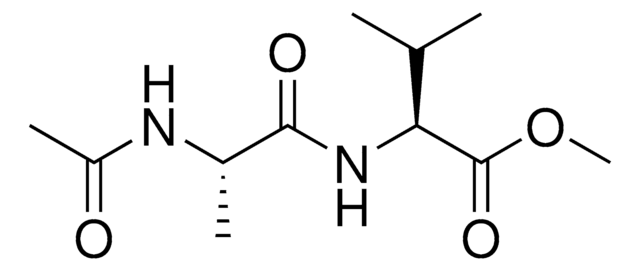SML3766
SRI-42127
≥98% (HPLC)
Synonym(s):
3-(1H-Indazol-6-yl)-N-methyl-N-(tetrahydro-2H-pyran-4-yl)imidazo[1,2-b]pyridazin-6-amine
Sign Into View Organizational & Contract Pricing
All Photos(1)
About This Item
Empirical Formula (Hill Notation):
C19H20N6O
CAS Number:
Molecular Weight:
348.40
UNSPSC Code:
12352200
NACRES:
NA.77
Recommended Products
Quality Level
Assay
≥98% (HPLC)
form
powder
color
white to beige
solubility
DMSO: 2 mg/mL, clear (warmed)
storage temp.
room temp
Biochem/physiol Actions
SRI-42127 is a blood-brain barrier permeable imidazopyridazinamine analog that potently and reversibly inhibits the RNA-binding protein HuR multimerization and blocks HuR nucleocytoplasmic shuttling. SRI-42127 suppresses the expression and release of several pro-inflammatory mediators with minimal effect on anti-inflammatory cytokines. SRI 42127 weakens HuR interaction with Bcl-2 and Mcl-1 leading to induction of apoptosis and decreased tumor growth. SRI42127 subdues microglial activation in vivo and attenuates the recruitment/chemotaxis of neutrophils and monocytes.
Storage Class Code
11 - Combustible Solids
WGK
WGK 3
Flash Point(F)
Not applicable
Flash Point(C)
Not applicable
Certificates of Analysis (COA)
Search for Certificates of Analysis (COA) by entering the products Lot/Batch Number. Lot and Batch Numbers can be found on a product’s label following the words ‘Lot’ or ‘Batch’.
Already Own This Product?
Find documentation for the products that you have recently purchased in the Document Library.
Targeting the HuR Oncogenic Role with a New Class of Cytoplasmic Dimerization Inhibitors
Cancer research, 81(8), 2220-2233 (2021)
Inhibition of the RNA Regulator HuR by SRI-42127 Attenuates Neuropathic Pain After Nerve Injury Through Suppression of Neuroinflammatory Responses
Neurotherapeutics, 19(5), 1649-1661 (2022)
SRI-42127, a novel small molecule inhibitor of the RNA regulator HuR, potently attenuates glial activation in a model of lipopolysaccharide-induced neuroinflammation
Glia, 70(1), 155-172 (2022)
Our team of scientists has experience in all areas of research including Life Science, Material Science, Chemical Synthesis, Chromatography, Analytical and many others.
Contact Technical Service








